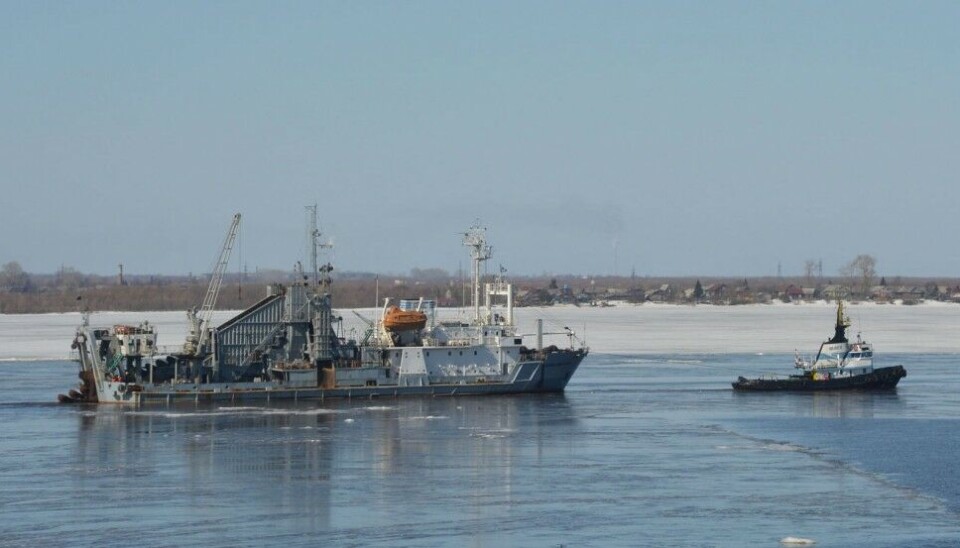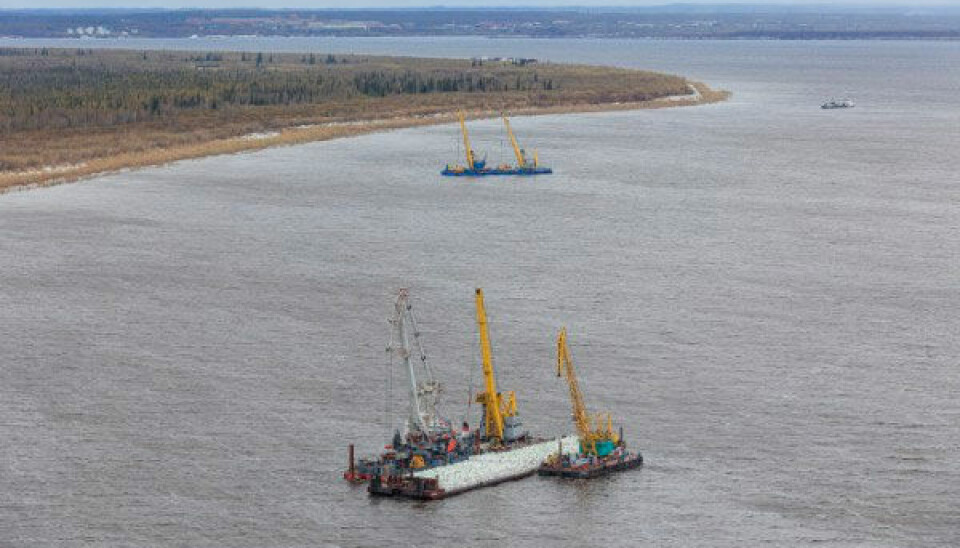
Russia continues big dig on Arctic seabed
A total of 13,5 million cubic meters of sea bottom is to be removed this year as part of Moscow's efforts to open shallow Arctic waters for shipping
The lion’s share of the dredging operations will take place in the Gulf of Ob and Gulf of Yenisey, Deputy Director of Rosatom’s Northern Sea Route Directorate Maksim Kulinko said in a recent conference.
The deepening of the shallow Arctic waters is needed for expanded shipping to new seaports and terminals in the area, Rosatom informs.
A total of 6,5 million cubic meters will be removed from the Ob bay as part of the opening of a ship channel to the new port of Utrenneye. In addition comes 2,7 million cubic meters from the Gulf of Yenisey in connection with building of Rosneft’s Sever Bay terminal and 1,8 million cubic from the waters near the new coal terminal of Severnaya Zvezda.
The three industrial projects — the Arctic LNG 2, Vostok Oil and Syradasayskoye coal — will be instrumental for Russia to reach its much-announced 80 million tons of goods on the Northern Sea Route by year 2024.

But the fulfilment of the ambitious plans for Arctic dredging comes with big difficulty. Following Russia’s war against Ukraine and the introduction of international sanctions, Rosatom’s subsidiary Hydrographical Company no longer has access to western dredgers to do the job.
According to Aleksandr Bengert, Head of the Hydrographical Company, a new Russian-owned fleet of dredgers is now under development. The new fleet must be capable of undertaking big volumes of dredging in the course of the short season of ice-free waters, Bengert says.
The major volumes of seabed that is the removed will seriously affect marine life in the area. Researchers have previously expressed concern about the major industrial developments in the Gulf of Ob.
According to researchers from the Ural Institute of the Ecology of Flora and Fauna, the dredging could ultimately mean death for precious local fish stocks.
Institute research leader Vladimir Bogdanov explains to newspaper Pravda URFO that parts of the Ob Bay must remain untouched by the energy companies if the vulnerable fish stocks are to be preserved.
He especially points at the waters around Cape Trekhburny, an area where fresh waters from the Taz Bay flows into the Ob Bay.
If dredging is conducted in this area it will be the end to the so-called semi-anadromous fish stocks in the area, he underlined.
“It means death for the semi-anadromous stocks of the Ob: neither the sturgeon, whitefish, smelt, nor freshwater cod will be no more. The precious kinds of fish in the Ob will vanish. It will be a huge loss, which actually can not be restored. The ecosystem will be completely changed,” he said to the newspaper.















